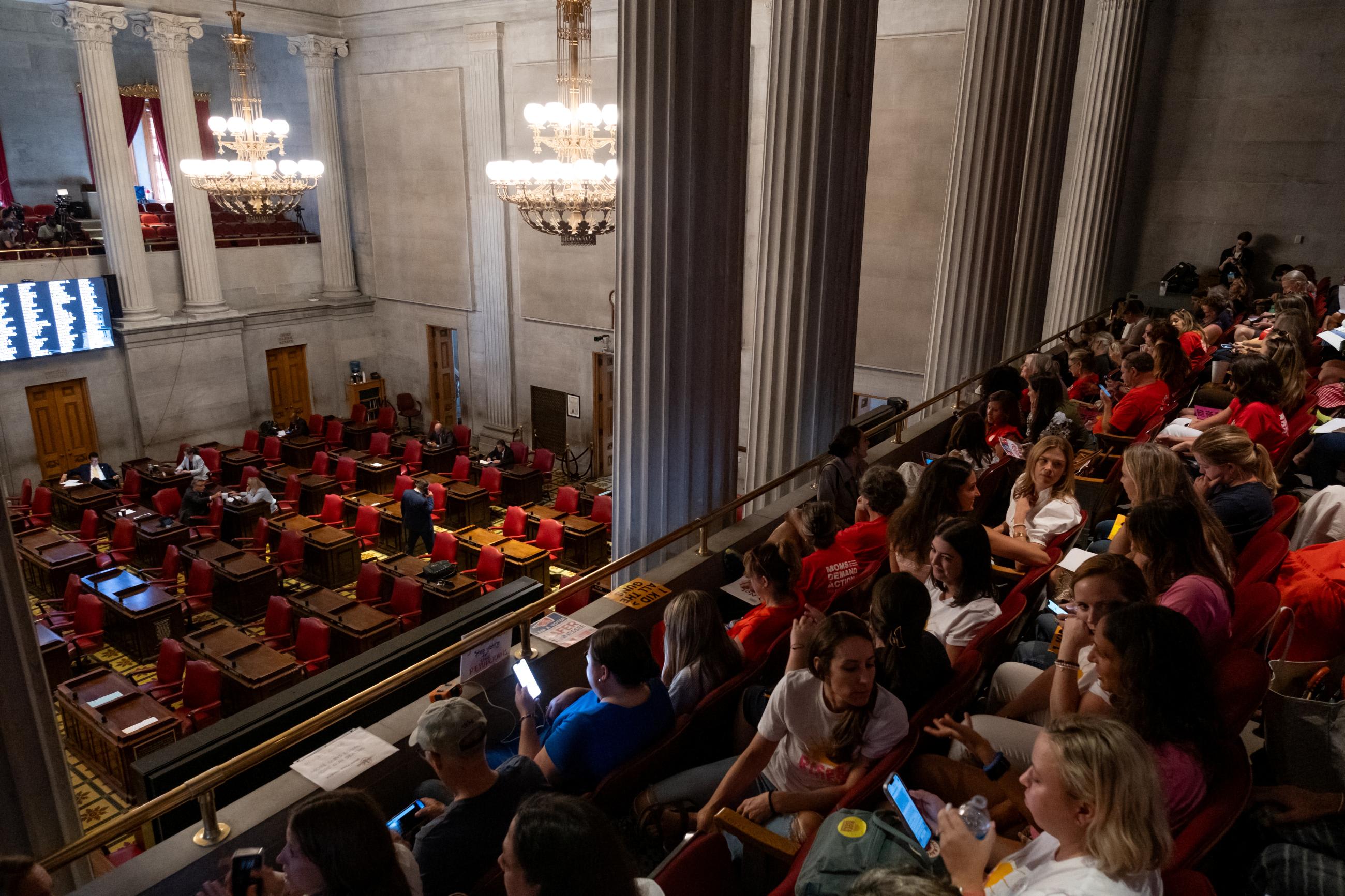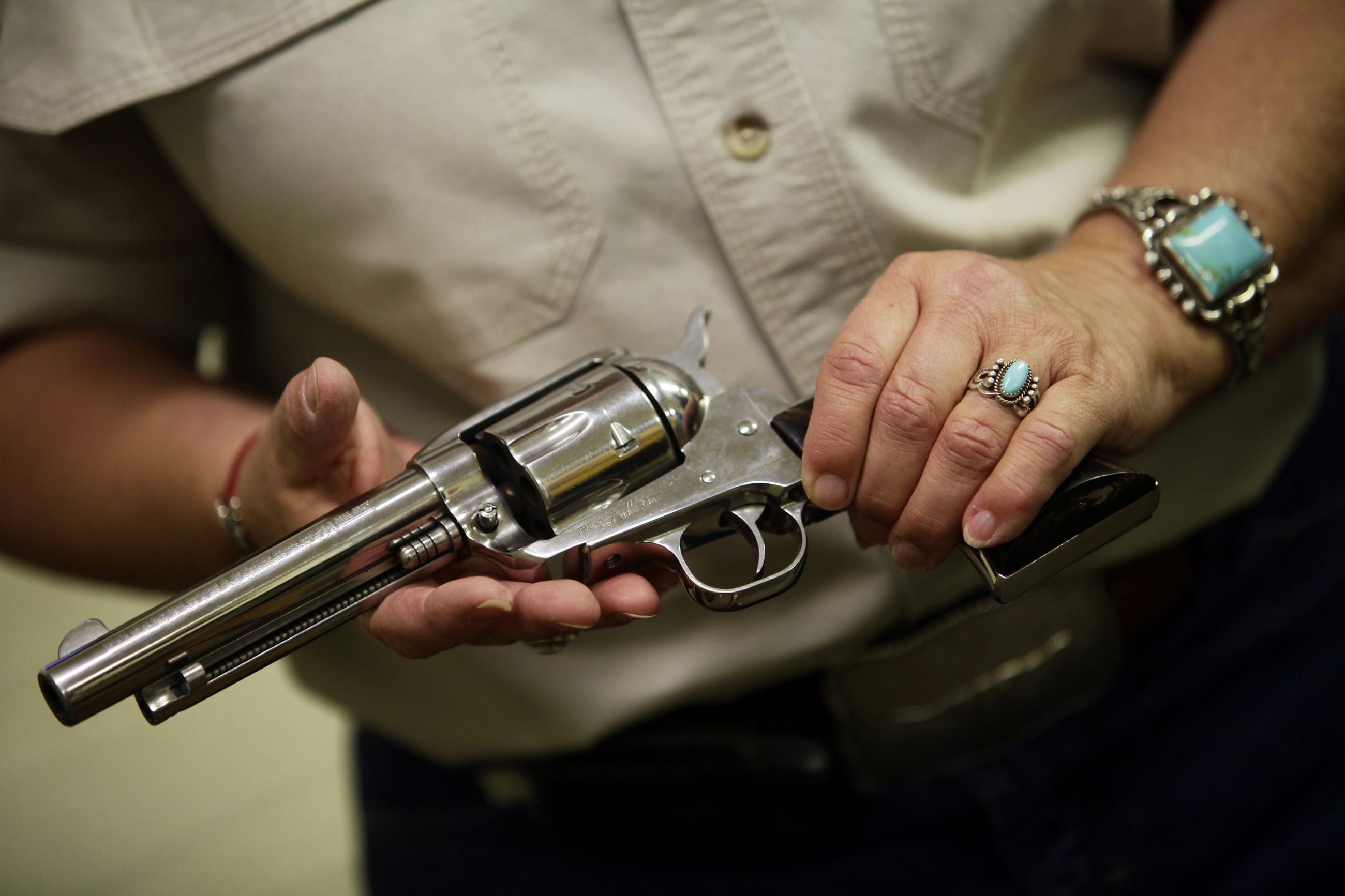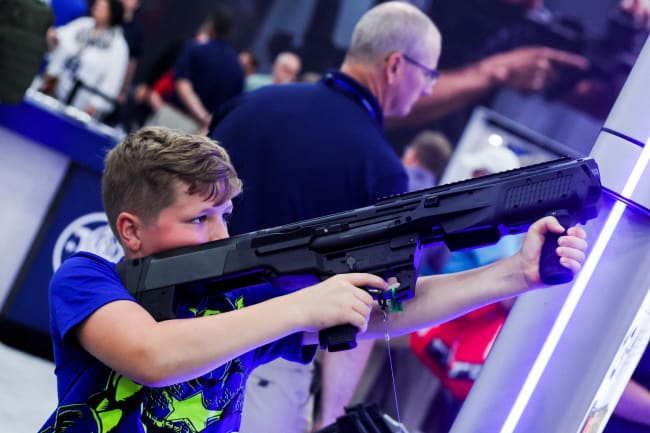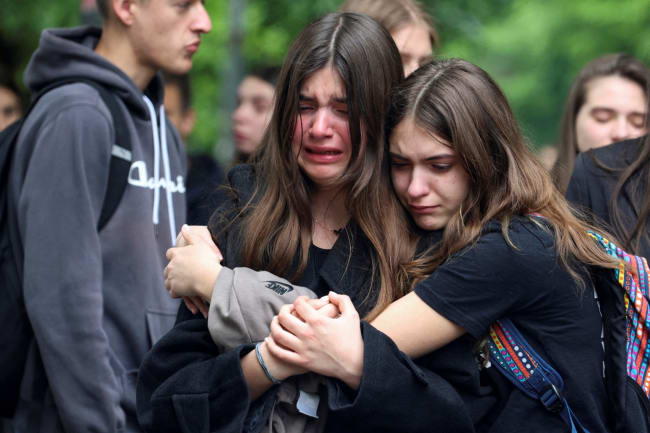Last summer, U.S. Surgeon General Vivek H. Murthy became the first in his office to declare America's firearm violence epidemic a public health crisis. From 2019 to 2022, gun violence killed more children and teens than any other cause of death, including car crashes and cancer. As of November 18, nearly 15,000 people have died in 2024 from gun violence in the United States, an average of 46 deaths each day.
On the heels of the election, Americans don't know how the incoming administration will address gun violence. Public health advocates do know that—regardless of federal support—they can continue to have an impact on gun violence through community and state-based public health approaches.
In addition to the Surgeon General's advisory—which detailed a commitment to reducing gun violence using a public health approach—the White House Office of Gun Violence Prevention, formed in September 2023, invested more than $4.4 billion to support community safety.
The federal government's recognition of gun violence as a public health crisis opened opportunities to work at the community level to not only eliminate violence, but also scale the presence of health, well-being, and trust in communities across the country.
Although it is not certain that the White House Office of Gun Violence Prevention or support for a public health model will continue, it has become clear that United States cannot arrest its way out of a public health crisis—even one centered on gun violence. Just like the opioid epidemic, COVID-19, and other public health emergencies, gun violence requires a public health approach at the community level to resolve.
The Public Health Versus Criminal Legal Approach
Historically, gun violence has been handled by the criminal legal system at the state and local level, its prevailing approach being to compel compliance using force and fear. In practice, police use a focused deterrence strategy following which they make more arrests in high-violence areas and increase the certainty of punishment for those who have committed a criminal offense.
Although commonsense gun laws and tough penalties are part of the solution, confronting gun violence only through increased police presence can do more harm by increasing arrests for low-level crimes that contribute to mass incarceration and greater police violence. This pattern is especially true for communities of color.
Trauma, geography, socioeconomic status, previous victimization, the prevalence of guns, and community vitality—access to health care, housing, food, jobs, and education—all play a hand in gun violence. Each of those causes is multilayered. For example, gun violence is often concentrated in low-income communities characterized by high rates of incarceration, poor education quality, and a distrust of government. These communities are disproportionately Black and Latino.
Diversion programs have been shown to decrease the probability of future convictions by up to 48%
The effect of repeated exposure to violence in these communities is wide ranging, affecting the health of victims, their families, and communities. The complex and systemic root causes can be addressed only through an all-hands-on-deck approach from within and outside the criminal legal system, including community leaders, health-care workers, and progressive prosecutors who are at the forefront of innovative approaches to reduce gun violence throughout the country.
Community-Based Approaches
Communities affected by gun violence need the resources, voice, and authority to address the violence that affects them. In some heavily policed neighborhoods, community members are pursuing violence reduction strategies that prioritize positive, public health–based interventions. Within the public health framework, several examples of community violence interventions focus on individuals most at risk of being a victim of or committing an act of gun violence.
These organizations recognize that violence affects both the victim and the perpetrator and therefore offer resources to both groups to prevent future violence. In their article "Investing in the Frontlines," researchers Amber Goodwin and TJ Grayson cite findings showing that in cities with 100,000 residents, the addition of every 10 organizations focusing on crime and community vitality associated with a 9% reduction in the murder rate, a 6% reduction in the violent crime rate, and a 4% reduction in the property crime rate.
Community violence interruption efforts primarily follow two models:
- The Group Violence Intervention (GVI) model is a focused deterrence strategy that targets groups of people at high risk of gun violence. It is facilitated by law enforcement agencies that identify individuals who are associated with or members of groups responsible for shootings. Examples include Project Safe Neighborhoods, a nationwide Department of Justice initiative that brings together federal and local law enforcement officials, prosecutors, community leaders, and other stakeholders to address violence, and Project Longevity, a Connecticut organization that recruits and trains law enforcement, social service providers, and community members to engage in a sustained relationship with violent groups.
- The Cure Violence model is a public health approach that addresses violence as a disease to be treated by "violence interrupters" in the community rather than by law enforcement. One example is Connecticut Violence Intervention Program, a nonprofit that works with youth and young adults who are affected by or involved with violence and the justice system. Another is Safer America Network, in which community volunteers work with schools and mental health providers to build community resilience by training schools and families on trauma-informed care and facilitating mediation, and prevent violence from occurring by increasing the connection and resources available to at-risk young people.
Northwestern University professor Andrew Papachristos has been at the forefront of community violence interventions research in Chicago. His work demonstrates the success of investing in street outreach workers, who use their lived experiences with gun violence to help break the cycle of violence.

Papachristos evaluated a program called Chicago CRED, which serves hundreds of mostly young men on Chicago's South and West sides who are at extreme risk of being involved in gun violence. CRED participants receive a modest stipend, a life coach, trauma treatment, education, and job training. Among the metrics Papachristos tracks is the rate at which CRED participants are arrested for a violent crime and the rate of their getting shot, termed victimizations.
His study shows that CRED participants who finished the two-year program experienced a 73% reduction in violence-related arrests relative to members of a similar group who did not take part in the program. According to Papachristos, "Most participants stopped carrying guns, getting into fights, robbing or shooting people, etc. By any measure, the program is a success. Most important, it reduces gun crimes, saving lives."
The Justice Collaboratory at Yale University conducted research [PDF] to figure out how members of the New Haven community felt about local gun violence interruption initiatives. Researchers learned that individuals prefer positive messages rather than punitive approaches. They found that community members still perceive violence intervention models that rely on law enforcement to identify those at highest risk as overly punitive.
The Role of Hospitals
A major risk factor for future violence is a history of previous violence, and hospitals are in an ideal position to identify and provide services to patients at risk of repeat gun violence. According to the Health Alliance for Violence Intervention, Hospital Violence Intervention Programs (HVIPs) are "multidisciplinary programs that combine the efforts of medical staff with trusted community-based partners to provide safety planning, services, and trauma-informed care to violently injured people, many of whom are boys and men of color."
Programs are conducted using initial intake and discharge screenings by hospital staff, who test for previous trauma and other associated risks. Although the outreach begins in the hospital, outreach workers continue engagement over the next 6 to 12 months, offering crisis intervention and counseling as well as referrals for job training, housing assistance, addiction counseling, and more.
Promising research shows that HVIPs are associated with reduced risks of future violence and crime. In Baltimore, Indianapolis, New York City, and San Francisco, studies have found that reinjury rates among HVIP participants were significantly lower than the rates of nonparticipants. Over the 10-year period studied, the violent reinjury rate among patients enrolled in the program was 4%, relative to a historical control of 8% from 2000 to 2004.
The Role of Prosecutors
Like hospitals, prosecutors can play a powerful role in identifying trauma or previous victimization—a key indicator of future gun violence—and then diverting victims from traditional prosecution.
Wellbeing & Equity Innovations (WEI) [PDF], a national nonprofit, is working with a midwestern county prosecutor's office to test the theory that addressing a victim's trauma can be more effective than an arrest for violating a firearm law. Their longitudinal pilot program aims to disrupt the accelerating cycle of violence through a novel trauma-informed diversion program that engages young adult defendants in critical need of trauma therapy to reduce the chances that they will engage in gun violence themselves.
After the prosecutor identifies someone for participation in the diversion program, the individual is screened by a program specialist for eligibility and assessed for their needs for support. Accused individuals then attend both individual and group sessions using trauma-informed approaches to educate on violence avoidance techniques and coping strategies. The program also connects participants to positive social supports that promote their stability within the community, including employment, housing, and mental health resources. If they complete the program, the defendant receives a dismissal, downgrade, or expungement of their conviction.
Diversion programs such as WEI's offer alternatives to prosecution and conviction by treating the root of the behavior that led to the arrest. Diversion programs such as these have been shown to decrease the probability of future convictions by up to 48% [PDF].
What's Next
Communities around the country are prioritizing public health approaches to reducing gun violence that rely on the leadership of community members, health-care providers, and progressive prosecutors. These innovative programs and interventions all do something powerful: They prioritize the presence of health, well-being, and trust. In this time of uncertainty at the federal level, it is more important than ever to support state, local, and community public health efforts rather than perpetuate futile and harmful efforts to police a way out of a health epidemic.













